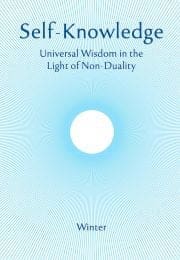The Absolute as the Lord of Maya
From the Shankara Source Book, Volume Two, Shankara on the Creation
The usages to which Shankara puts the term ‘Maya’ may be analysed briefly as follows. It is found in certain non-philosophical contexts in the non-technical sense of duplicity or dishonest dealings in the world, but these passages have no relevance to our present enquiry. Its most common meaning is ‘magic’. It is clear from the literature of Shankara’s day that there was a widespread belief that certain strolling magicians had the power to induce visions and hallucinations by hypnotism, not of mere individuals alone but also of whole congregations of spectators.
In fact there is evidence that such mass-hypnotists still existed in India in recent times. Two well-known literary works, probably composed about Shankara’s day, the romance of Dain called ‘The Ten Princes’ and Shri Harsha's play ‘The Pearl Necklace’, provide colourful pictures of a mass-hypnotist, armed with a peacock’s feather wand, conjuring forth magic visions at the court or palace of a king. Another source makes it clear that mass-hypnosis was involved, in that it speaks of the juggler’s power to attune the minds of many observers gathered in an assembly to one and the same false vision.
Magic or hypnotism per se have nothing to do with philosophy. But Shankara puts the word ‘Maya’ in the sense of hypnotist’s magic to philosophical use through comparison. Invoking the Indian rope trick he can say, ‘Just as the real magician is different from his unreal image climbing the rope, so is the supreme Lord different from the individual soul’. Often the intention of such illustrations is not merely to bring out the illusory nature of the object that has been compared to the magic display, but also to emphasize that the Creator of it is not touched by his creation and that the latter is effortless.
Shankara also uses the term ‘Maya’ in a religious rather than a philosophical sense, inspired by Brahminical and Vedic sources.
Shankara was able to preserve this tradition because he took the Maya of the Lord, the great cosmic power of the Lord spoken of in the Epics, Puranas and earlier tradition, as that through which, though remaining one, He* manifested as the universe in all its variety. Maya so conceived was a power comparable to that of the mass-hypnotist, a power exercised without effort and involving no activity or change on his part, of hiding his true nature as infinite Consciousness and appearing under manifest finite forms that were illusory and did not, from the standpoint of the highest truth, exist.
Subscribe or enrol for free guest access to read all of this article and Self-Knowledge online.
Already subscribed or enrolled? Log in:


